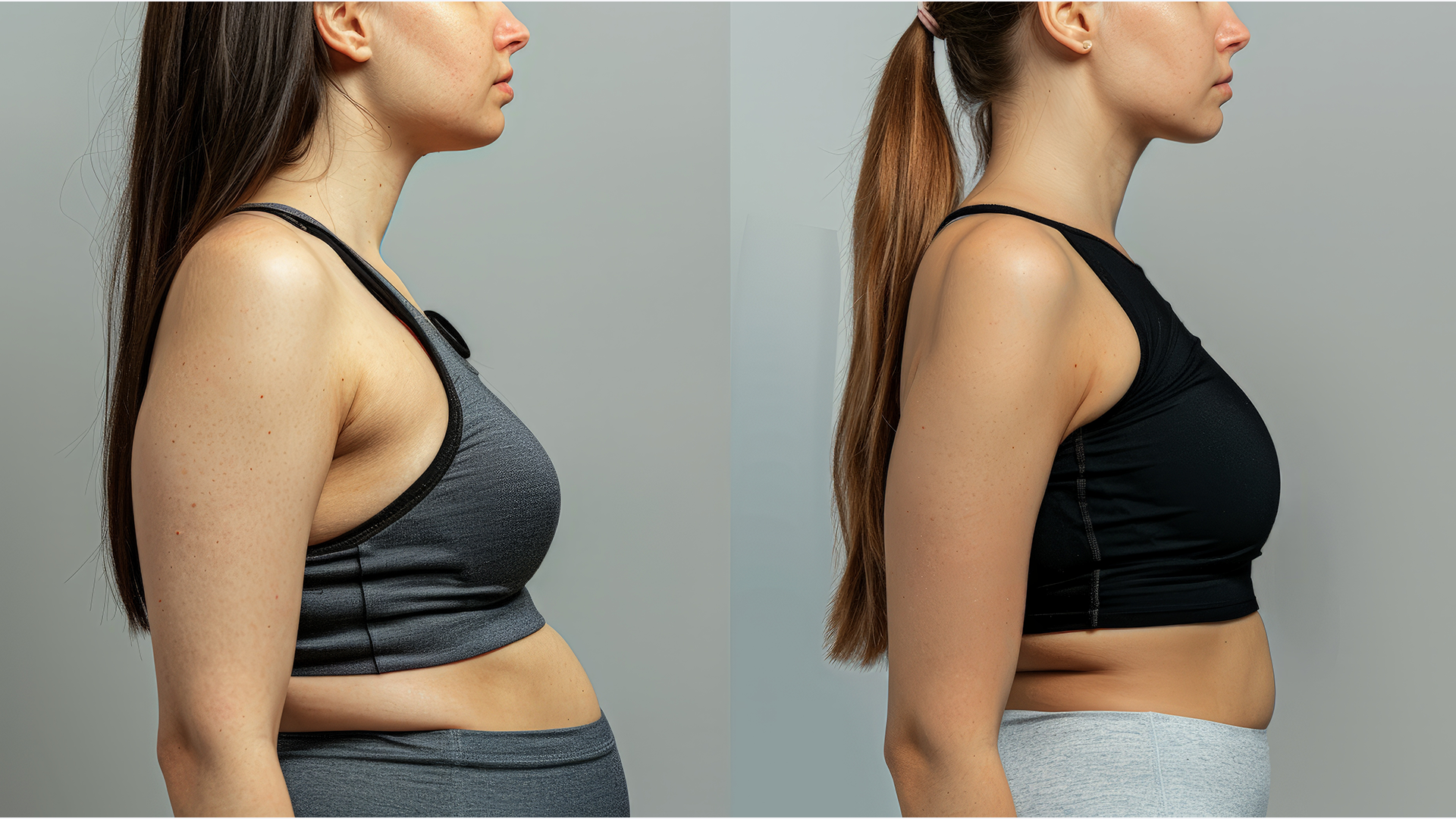VBloc therapy is an increasingly popular form of weight loss surgery that’s got a lot of people excited. If you want to lose weight and have struggled with other options, then you might be considering it as a viable alternative. But how does it work? And does it really deliver significant results? In this article, we explore how VBloc therapy works, who it can help, and whether it’s really effective.
- What Is VBloc Therapy?
- How to Qualify for The Procedure
- How Much Does It Cost?
- How Is VBloc Surgery Carried Out?
- What Are the Benefits?
- Risks and Side Effects
- Post-Surgery Recovery and Diet
- Does VBloc Work for Weight Loss?
- What Are The Alternatives?
- Conclusion
What Is VBloc Therapy?
VBloc therapy is a form of weight loss surgery that blocks hunger signals so that people eat less. It’s designed to help those who are obese to reduce their weight and improve their overall health. The therapy focuses on reducing impulses that are sent between the stomach to the brain via the vagus nerve, which is why it’s known as ‘VBloc’.
Scientists believe that blocking vagus nerve signals may reduce the urge to consume food. The nerve links the brain to the stomach, digestive tract, and several internal organs too. It communicates information to the brain about the body’s physical wellbeing as well as its emotional state. The signals it sends play a role in regulating a number of involuntary functions, sometimes known as ‘parasympathetic’ pathways.
By changing its impulses, the brain doesn’t receive the usual signals about hunger, digestion, or stomach emptying. This makes it think that it doesn’t need food so people feel less hungry and aren’t as tempted to overeat. For people who are struggling to lose weight, this can help set them up for long-term success and a healthier BMI.
How to Qualify for The Procedure

The FDA has set limits on the types of people who can be approved for VBloc therapy. In order to qualify, you’ll need to meet a number of criteria…
- Aged 18 years or older
- Have a BMI of 40-45
- Or have a BMI of 35-39.9 and weight-related health conditions such as type 2 diabetes or high blood pressure
- Must have already tried a supervised weight management program (unsuccessfully) within the last 5 years
If you meet these requirements, then you may be eligible for this type of treatment.
How Much Does It Cost?
The typical VBloc therapy cost is around $18,500 which is a substantial investment. Although it’s not as invasive as other options like bariatric surgery, it still has a significant price tag attached. The total amount you pay will also be affected by other factors like the hospital you go to or surgeon that does the procedure.
Unfortunately, the treatment isn’t covered by many insurance companies because it’s still quite a new therapy. This can make it a much more expensive option that other insurance-covered treatments such as having a gastric balloon fitted. However, there may be options available to you so don’t let the cost be a deciding factor. The company that manufactures the treatment device (EnteroMedics) can provide assistance in reviewing insurance policies to see if coverage can be included.
How Is VBloc Surgery Carried Out?
VBloc surgery involves having a small device attached to the vagus nerve. It’s positioned near the stomach so that it can stimulate contraction and expansion (which is what happens when you eat and digest food). The device slows the frequency of these movements for 12 hours each day so that patients feel full more quickly. It also changes the hunger signals that are transmitted to the brain. This makes people less likely to overeat and removes the craving aspect too. Because the desire for additional food isn’t there, it’s much easier to resist temptation.
One of the key benefits of VBloc therapy is that it doesn’t involve major surgery. The device is implanted into the torso using a laparoscopic procedure, which is minimally invasive. This usually takes 60-90 minutes and can be done as an outpatient, so there’s no need to stay overnight in a hospital. Unlike other forms of weight loss surgery, it doesn’t involve any physical changes to the stomach.
No Changes to Digestive Anatomy or Diet
VBloc therapy does not alter a person’s digestive anatomy. The body continues to process food exactly as it did before, meaning no restrictive diets, no physical reactions to food, and no life-long nutritional supplement regimens. This aspect makes it appealing for those wary of drastic lifestyle changes or surgical alterations.
The surgery is followed up with lifestyle coaching to help with dietary changes. It’s also recommended that patients work with a dietitian who can advise them on nutritional requirements and how to adapt their diet. However, it’s important to note that these are enhancements to support weight management and not necessities due to anatomical changes.
Additionally, the therapy is reversible. It can easily be deactivated or removed at any time, offering flexibility and peace of mind for patients considering this weight loss option.
What Are the Benefits?
VBloc therapy can be highly beneficial for those who need to lose a significant amount of weight. It also has several advantages over other types of weight loss therapies and procedures. Here are the key benefits…
- Aids significant weight loss
- Doesn’t involve a restrictive diet
- Reduces cravings and desire for large amounts of food
- Life-long nutritional supplementation isn’t required
- Doesn’t result in unwanted physical reactions to food
- Easily deactivated or reactivated wirelessly by a surgeon
- Completely reversible and can be removed at any time
These benefits make it an appealing option for people looking to reduce their BMI and improve their health. However, there are also some drawbacks of which cost is one of the biggest. The therapy is also associated with some risks and side effects that need to be considered carefully.
Risks and Side Effects
This type of procedure isn’t suitable for everyone even if you meet the qualification criteria listed above. People with high blood pressure, cirrhosis of the liver, and certain types of hernia are not allowed to have it done so it’s important to consult with a doctor.
Side effects of VBloc therapy can include temporary digestion issues or discomfort such as…
- Nausea
- Vomiting
- Problems swallowing
- Belching
- Heartburn and indigestion
- Pain in the chest or stomach
- Surgical complications
The surgical complications that some people have experienced include malfunctioning of the device or pain at the site it was implanted. Some people have also experienced gallbladder disease or a collapsed lung as a result. These are deemed to be of a low to moderate risk with 3.7% of patients experiencing a serious adverse event. It’s worth noting that this is lower than comparable weight loss procedures, including gastric bypass and band surgery.
A small proportion of people (just under 7%) need to have the device adjusted, replaced, or removed completely following implantation. The longer-term effects of this type of therapy haven’t yet been studied so more time is needed to understand the life-long implications.
Post-Surgery Recovery and Diet
Recovery from VBloc surgery is relatively quick. You won’t need to stay in a hospital overnight so can be back at home the same day. However, you will need 3-4 days off work so that your body can rest and recover adequately. It takes 4-6 weeks to be fully recovered so you’ll need to take care and look after yourself during this time.
Part of the recovery process involves changing lifestyle habits such as diet and physical activity. Patients work with a dietitian or nurse on a new diet plan that will meet their health and weight loss needs. The good news is that there’s no need for long-term supplementation because your nutrient absorption won’t be affected.
Vbloc therapy includes a range of follow-up tools that are designed to support the weight loss journey, ensuring a comprehensive approach to achieving a healthier lifestyle.
-
Bariatric Surgery Candidacy: Before embarking on this transformative journey, a thorough evaluation is conducted to determine whether a patient is a suitable candidate for bariatric surgery. This step ensures that every individual receives the most appropriate care tailored to their unique needs.
-
Pre-Surgical and Post-Surgical Support: Patients are not alone in this journey. From preparing for surgery to navigating life afterward, ongoing support is provided to maximize success and ensure a smooth transition through each phase.
-
Types of Bariatric Surgery: Understanding that one size does not fit all, various surgical options are available. Each type is designed to meet specific health goals and circumstances, offering personalized pathways to weight loss.
- Lifestyle Coaching – from a dietitian who will help to customize a meal plan and exercise routine that meets your needs.
- Weight Loss Tracking – enables you to see progress and maintain motivation as you gradually lose weight.
- Online Resources – such as educational materials, lifestyle tracking tools, videos, and step-by-step guides.
These changes aren’t required from a medical perspective as non-adherence won’t cause complications. However, they are strongly recommended to ensure that patients achieve their weight loss goals in a healthy and sustainable way.
This holistic program ensures that everyone receives the care, guidance, and tools necessary to thrive on their weight loss journey.
What Related Services Are Associated with Bariatric Surgery and Weight Loss Support?
When exploring bariatric surgery and weight loss support, various related services play crucial roles in ensuring successful outcomes. Here's a breakdown of what you can expect:
1. Bariatric Procedures
- Different types of bariatric surgery are available, including gastric bypass, sleeve gastrectomy, and adjustable gastric banding. Each procedure is tailored to meet individual health requirements and weight loss goals.
2. Pre- and Post-Surgical Support
- Pre-Surgery: Before surgery, patients often undergo nutritional assessments and counseling to prepare for the lifestyle changes ahead.
- Post-Surgery: After the procedure, ongoing support includes routine medical evaluations and personalized dietary plans to maintain long-term success.
3. Primary Care Integration
- Coordinated care with primary healthcare providers ensures that all aspects of a patient's health, including chronic conditions, are managed effectively alongside weight loss treatment.
4. Emergency Medicine
- Access to emergency healthcare services is crucial for managing any immediate health concerns or complications that may arise before or after surgery.
5. Pharmacy Services
- Comprehensive pharmacy services offer medication management, ensuring patients receive the prescriptions they need for surgery preparation and recovery phases.
6. Weight Loss and Lifestyle Guidance
- Professional guidance aims to educate patients on healthy eating habits, exercise routines, and behavior modification strategies to support sustainable weight loss beyond the surgical intervention.
These services work together to provide comprehensive support, aligning medical, nutritional, and lifestyle components to enhance the effectiveness of bariatric surgery and ensure sustained weight loss.
Does VBloc Work for Weight Loss?
Now let’s look at the big question – is VBloc actually effective when it comes to losing weight? The results are mixed with some people seeing significant VBloc weight loss and others not achieving as much as hoped. The American Society for Metabolic and Bariatric Surgery (ASMBS) have stated that the long-term weight loss effects of the procedure are not yet known. Here’s a summary of what existing VBloc reviews have found…
A clinical trial involving almost 300 subjects did not find significant weight loss results. All of the participants had the device implanted but it was only activated in two-thirds of them. The remaining third was effectively a placebo group since their devices weren’t turned on or functioning. After 12 months, the researchers didn’t find a significant difference in weight loss between the two groups. This indicates that the device is not particularly effective in helping people to shed pounds.
However, other trials of the device did produce significant weight loss results. In one study, the people who were implanted with an activated device lost significantly more weight (24% of their excess) and kept it off after 18 months. The non-activated group lost a smaller amount of weight initially (15%) but this dropped to 10% after the 18-month period.
This study suggests that the device is effective and directly contradicts the previous one. When the evidence is mixed in cases like this, it’s best to wait for more research to be conducted to get a clearer idea of whether something really works.
What Are The Alternatives?
You might be wondering about the alternatives to VBloc therapy, so what are the options? Losing weight usually comes down to consuming fewer calories than you expend through activity. Here are some ways that you can achieve this…
- Lifestyle changes to diet and exercise
- Appetite suppression supplements
- Fat burning supplements
- Gastric balloon
- Gastric band
- Gastric bypass
- Sleeve gastrectomy
These options all come with their own pros and cons. Making lifestyle changes can be tough to initiate and require willpower to maintain. People with significant amounts of weight to lose may not be able to perform the amounts of physical activity that are required.
Appetite suppression and fat burning supplements are an effective way to get started since they curb cravings and make it easier to develop healthy habits. Other types of surgery for weight loss have more research to support their long-term effectiveness but they also come with more risks and side effects than VBloc therapy.
Understanding Bariatric Surgery
Bariatric surgery is a life-changing procedure designed to support significant weight loss by altering the digestive system. Here's a closer look at the types commonly performed:
Types of Bariatric Surgery
-
Gastric Bypass
- Often termed Roux-en-Y gastric bypass, this procedure creates a small pouch at the top of the stomach, directly connecting it to the small intestine. This method not only restricts food intake but also reduces nutrient absorption.
-
Sleeve Gastrectomy
- A large portion of the stomach is removed, resulting in a tube-like structure. This limits the amount of food one can consume and also influences hunger-related hormones, promoting weight loss.
-
Adjustable Gastric Banding
- A band is placed around the upper part of the stomach, creating a small pouch above the band. The size of the opening to the rest of the stomach can be adjusted, controlling the amount of food intake.
-
Biliopancreatic Diversion with Duodenal Switch (BPD/DS)
- This complex procedure involves both a sleeve gastrectomy and rerouting the intestines, significantly limiting food intake and absorption. It's typically reserved for individuals with a very high BMI.
Comprehensive Support
Pre-surgical and Post-surgical Care
Undergoing bariatric surgery is not just about the procedure itself; comprehensive support is vital. This includes:
- Pre-surgical Counseling: To ensure patients are well-prepared mentally and physically.
- Post-surgical Follow-up: Regular check-ups and nutritional guidance to maintain health and wellness after surgery.
Understanding these diverse options helps individuals make informed decisions about whether bariatric surgery is the right step toward a healthier life.
Summary: VBloc Therapy
VBloc therapy changes hunger signals between the stomach and brain so that people eat less. It involves having a small device attached to the vagus nerve which takes 60-90 minutes and can be done as an outpatient. Benefits include aiding significant weight loss, reducing the desire for food, and the fact that it’s easily reversible.
However, the treatment is only available for patients that meet strict criteria and costs around $18,5000. As with any medical procedure, there are some risks involved. More research is needed to confirm whether it’s an effective weight loss solution long-term.




